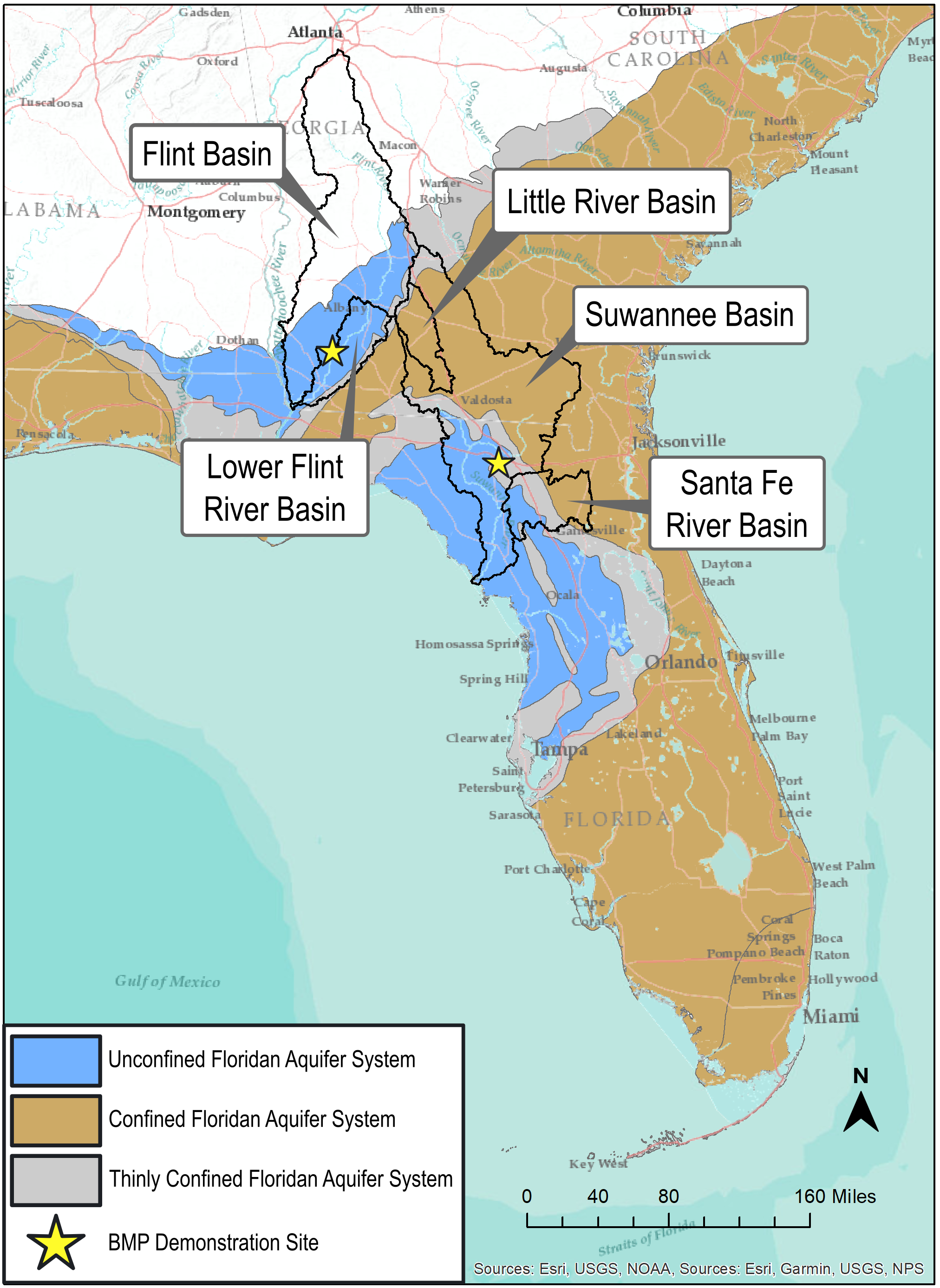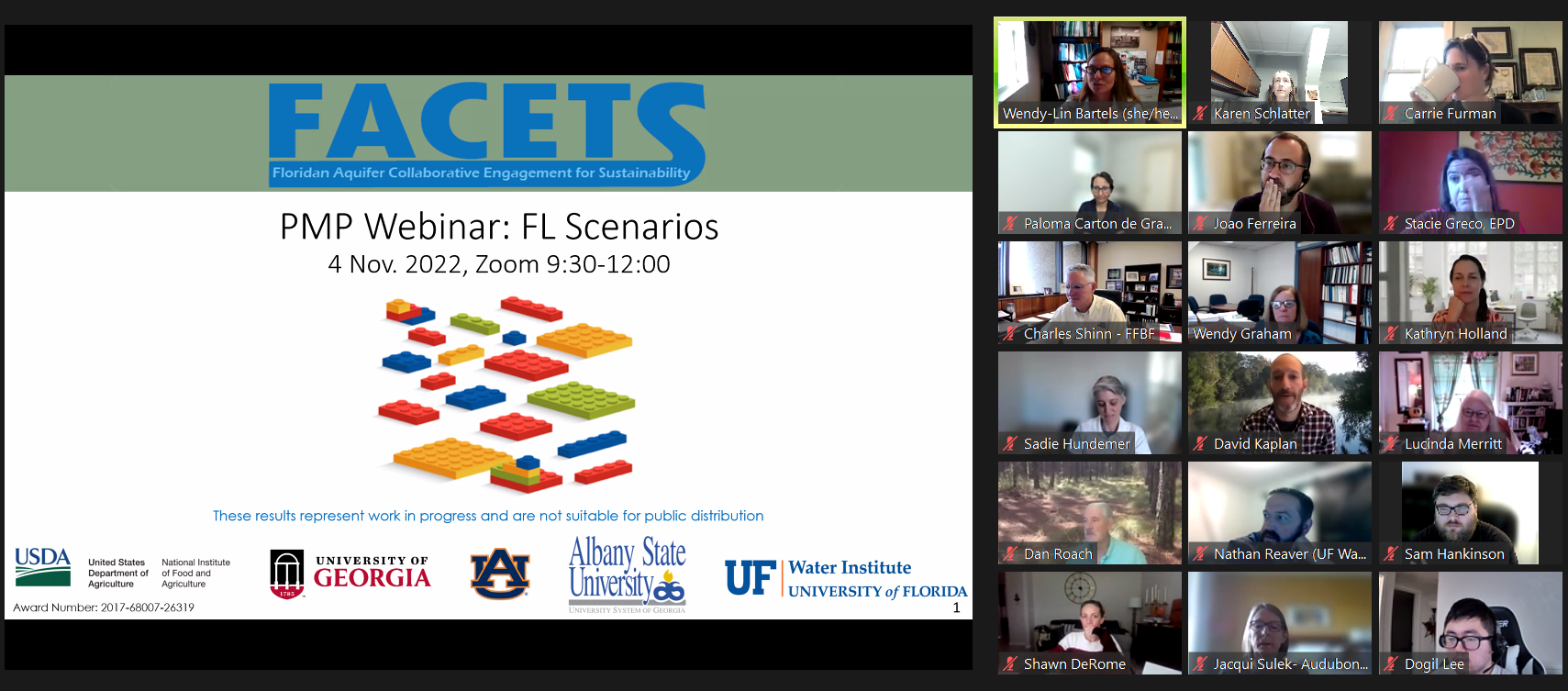
A stakeholder-informed, scientifically defensible, biophysical and economic modeling platform was collaboratively developed using an interactive, participatory process (Participatory Modeling Process or PMP). The modeling platform enabled us to generate future scenarios and explore tradeoffs and synergies among agricultural and silvicultural production and environmental protection in the Santa Fe River Basin in Florida and the Lower Flint River Basin in Georgia. These scenarios integrated the “language” of the project, translating environmental goals into economic outcomes, relating economic outcomes to societal acceptance (or rejection), and enabling discussion of how changes in policies and individual decisions might transform social priorities sufficiently to achieve a desirable future.
Outputs from the biophysical and economic modeling platform were intended to inform land-use change models for the Santa Fe River Basin and Lower Flint River Basin that would predict spatially explicit land-use change in response to economic and policy scenarios for these watersheds. However, due to delays in the development of the integrated modeling platform, the land use change modeling effort was prototyped using a pre-existing model for the Little River Basin in Georgia the Suwannee River Watershed. This analysis was not performed under the Participatory Modeling Process and did not inlcude stakholder feedback in the process.


